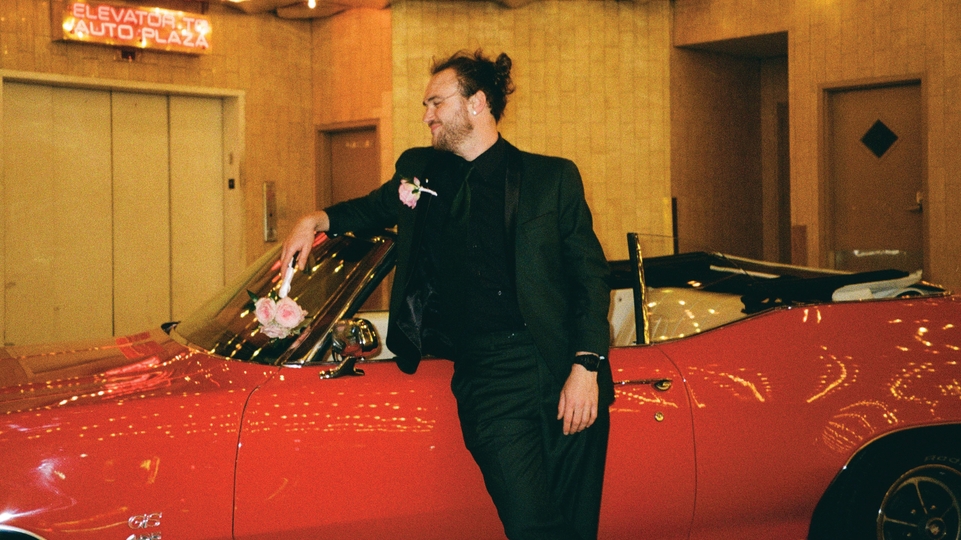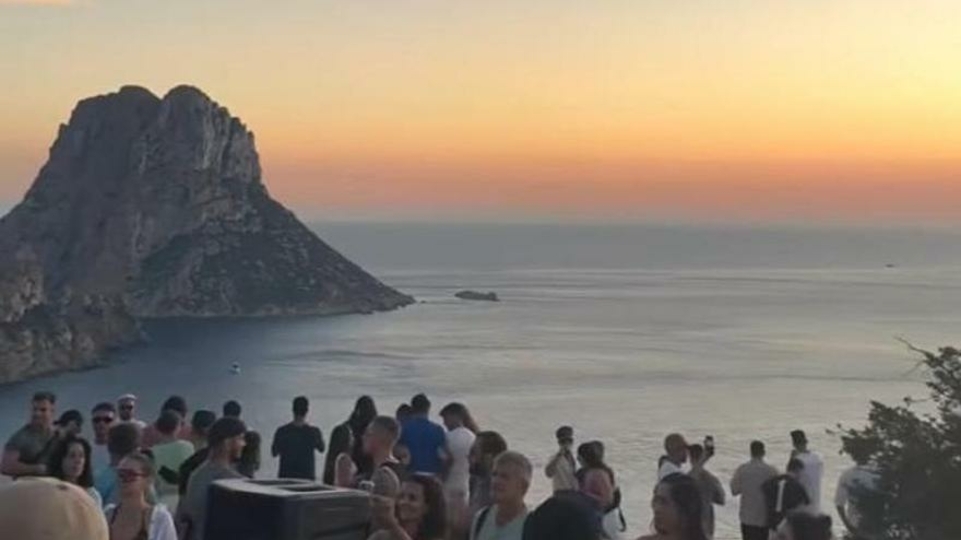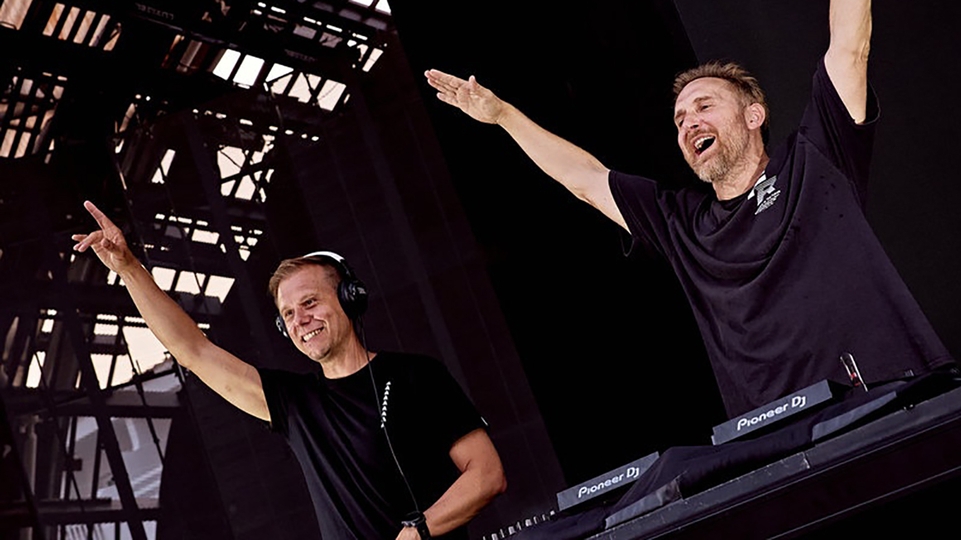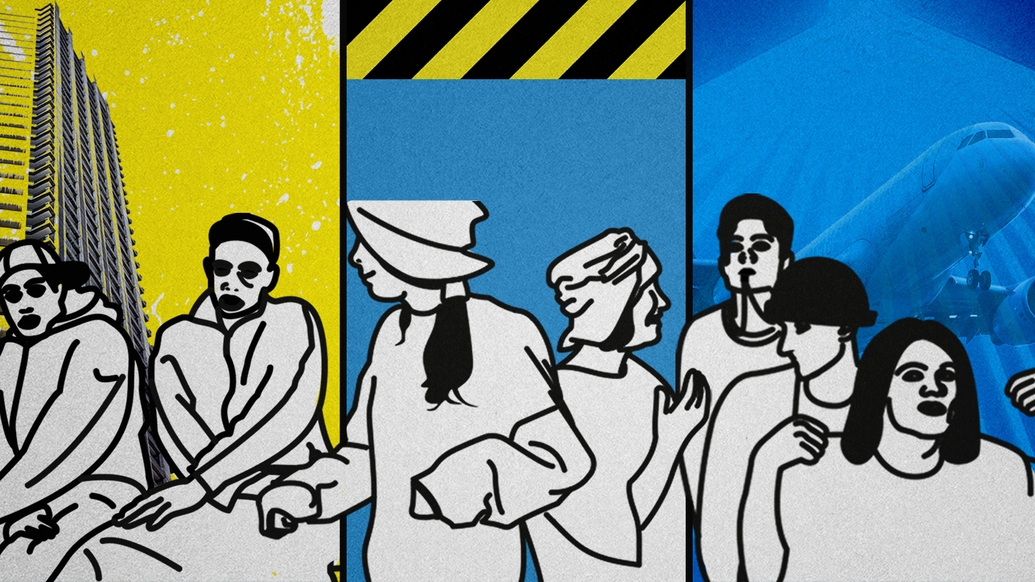
How much of UK dance music history is real?
Every era of British dance music has its myths and over-simplified narratives — hell, even little known local scenes have urban legends. Below, Matt Anniss explores how a tendency towards selective documentation of dance music culture in the UK has led to a widespread acceptance of reductive narratives, which only tell a fraction of British dance music’s complex story
We need to think about how we document dance music culture. It may seem odd saying this when there are so many magazines, podcasts, and websites dedicated to it, but this is only a recent phenomenon. For much of the 50 or so years dance music has existed, there was little or no accurate documentation of DJs, clubs, dancers, or the music that made them all move.
“One of the reasons Frank [Broughton] and myself wrote Last Night A DJ Saved My Life was because we felt the culture had been so badly documented,” Bill Brewster says, of their definitive 1999 book. “I read so many times that the Paradise Garage was based in New Jersey rather than New York City. In the British press, it moved around more than a mobile disco.”
Brewster was one of the UK’s first dance music journalists, building on the work of youth culture writers Sheryl Garratt, Editor of The Face from 1989-95, and i-D’s Matthew Collin and John Godfrey. Aside from those running black music magazines like Blues & Soul, and acid house era fanzines like Boy’s Own, Boomtown, and Freaky Dancing, they were lone operatives working with publications that gave limited space for club reporting.
“Our aim was that if you were coming from Mars and wanted to know what young people were interested, then we’d give you a snapshot of it in The Face,” Garratt says. “There was never any sense of, ‘This month we must find a club to cover’. If we didn’t have a club story, we did fashion. If we didn’t do fashion, then we did something else.”
While some more established youth culture journalists periodically took an interest (Jon Savage included some of his musings on acid house in his 1996 anthology, Time Travel), Garratt was one of the few club culture specialists in the UK at the time, along with Sherman, Jack Barron, and Helen Mead at the NME, among others. “Because I was seen as being in the middle of it, there would be an annual call from a national newspaper asking me to write a piece about dance music,” she says. “It was like I was supposed to feel honoured.”
When clubbing turned from a niche pursuit into a national hobby in the early ’90s, Garratt and her colleagues were at the forefront of chronicling it. Some of them later wrote vital early histories, mixing their lived experience and collected knowledge with quotes from vast numbers of interviews.
1998 saw the publication of three foundational tomes. Garratt’s Adventures in Wonderland paid particular attention to Chicago house (a scene she’d experienced first-hand in 1986) and the rise of acid house in the UK. Matthew Collin’s Altered State chronicled MDMA’s impact and the British DJs and clubs that popularised it, and Simon Reynolds’s Energy Flash focused on the music, introducing the concept of the “hardcore continuum” to explain the bass-heavy pulse of British clubs.
Their significance (and of 1999’s Last Night A DJ Saved My Life) lies not in their obvious quality, or the fact that they were amongst the first to attempt to make sense of dance music in the UK, but in the way that they set in stone interpretations of events that persist to this day.


The weight of significance that a small selection of books published over 20 years ago gave to certain clubs and people has inadvertently led to a widespread and contemporary acceptance of reductive narratives, only telling a fraction of British dance music’s complex story.
“Some areas of this history have undoubtedly been more documented in books than any other,” Matthew Collin admits. “There are two books focusing exclusively on the Hacienda in Manchester, by Jon Savage and Peter Hook respectively, but no books about dance music culture in Scotland or Wales. Was a person dancing at the Hacienda more historically important than another person dancing at Slam in Glasgow or Pure in Edinburgh?”
The way the Hacienda has been documented is a particularly good example of how misleading narratives can take root. Popular culture coverage of the club tends to focus on one specific phase of its story — the “Madchester” era of 1988-90 — and ignores the fact that it was mostly serious black dancers from the North’s jazz-funk and electro all-dayer scenes who initially populated it.
There is evidence to support this — it’s extensively covered in Mark ‘Snowboy’ Cotgrove’s brilliant book, From Jazz-Funk & Fusion To Acid Jazz: The History of The UK Jazz Dance Scene, and explored in my recent book, Join The Future: Bleep Techno and the Birth of British Bass music — but it’s a story rarely told.
“If you look at the people who were into house music early on in the North of England, well over half of those were black, and even more so in places like Manchester and Sheffield,” Brewster says. “The nuanced version of house music history in the UK, where there’s loads of black kids into it before Ecstasy arrived, is not as compelling to documentary makers and some writers, even though it’s more accurate.”
What remains compelling, to documentary makers at least, is the infamous “Ibiza origin” story — that much-repeated tale of four friends (DJs Paul Oakenfold, Danny Rampling, Johnny Walker, and Nicky Holloway) who had a life-changing Ecstasy experience at Amnesia in the summer of 1987. According to this story, it was the clubs they promoted on their return — Shoom (Rampling), Spectrum and Future (Oakenfold, Walker), and the Trip (Holloway) — that brought acid house to the masses.
According to Collin’s Altered State, this take on how acid house fever spread first appeared in i-D in May 1988. The article describes the enthusiasts as “Amnesiacs”, features pictures of wide-eyed British dancers in Ibiza wearing what would become standard “Balearic” dress (dungarees, shorts, baggy t-shirts, paisley shirts), and profiles the London clubs that were pushing the sound.
A month later, Garratt penned her own piece on Shoom, briefly pointing out that the capital had finally discovered house, “a year after the Midlands and North”. This is a crucial point that tends to get overlooked when the Ibiza origin story is trotted out in books and documentaries: parties raged in London, on Clink Street near London Bridge and the Dungeons on Lea Bridge Road, blasting dirty acid sounds.

While some London DJs and soundsystem crews played house prior to Oakenfold and company — most notably Kid Bachelor, Jazzy M, and Mark Moore — there were far more clubs and DJs further North that were incorporating house into their sets from late 1985 onwards.
This was because the black dancers that populated their clubs demanded it (some Manchester jazz dancers were even given free passes to the Hacienda in its troubled early days) — as did the provincial working class football hooligans who spent their summers robbing Europe’s designer clothes stores and dancing in Ibiza. In fact, it was these ‘casuals’, including a Sheffielder called Tony Canetti, who shaped acid house fashion.
“Those boys from Sheffield brought what we now know as the Balearic look to the island,” Homobloc co-founder Luke Unabomber told me in an interview last year. “This was years before acid house exploded in the UK. There was also a corner of Amnesia’s dancefloor named after one of the members of the Sheffield United hooligan firm. A whole corner!”
These characters, and their counterparts from Manchester and the Midlands, were also allegedly responsible for importing the first wave of Ecstasy pills to hit parts of the UK (they had been available in limited amounts in London since the early ’80s). So why is their story, and the role played by DJs in Sheffield, Nottingham, and Manchester in championing house, left out of the popular narrative?
“It’s much easier to tell a story through four people’s eyes than it is to try to track down all of the British kids that were in Ibiza in the three or four years before,” Garratt says in defence. “Rampling and Oakenfold were pivotal in how the culture exploded. They also made themselves available for interviews.”
There was another issue that made accurate reporting difficult at the time: the criminality of some of those involved. “There are people with completely legitimate business empires now that were founded on money from selling drugs,” Garratt says. “There were times during interviews when an interviewee would look at me aghast and say, ‘If you print any of that, you’ll get someone killed.’”
Every era of British dance music has its myths and over-simplified narratives — hell, even little known local scenes have urban legends. When I began work on Join The Future I thought that bleep techno began in Sheffield, but I discovered that the style first emerged from Leeds and Bradford.
It took years of research to find people (notably Leeds lynchpin DJ Martin, the original third member of LFO), make sense of the story, and work out the chronology. This is another key point: people remember things differently, with interviewees giving sincere but conflicting versions of the same events.
Regardless, it is the duty of documentarians to challenge misleading or over-simplified narratives when research shows that what we’re told is either incorrect or partially true. It’s our responsibility to counter myths and offer our interpretation of the established facts, even if this means rewriting history.
That’s what artist Jeremy Deller did with his 2019 film, Everybody in the Place: An Incomplete History of Britain 1984-95. In it, Deller chose to either ignore or play down many of the most often mentioned clubs, in some cases placing equal prominence to illegal raves and warehouse parties that happened outside of London and the South East.
“The driving motivation was not to make a documentary that featured a bunch of 50 or 60 year-old DJs telling the rest of the world how great pills were in 1987,” says Ed Gillett, who worked as the senior researcher on Deller’s film. “The Shoom, Ibiza, and London tastemaker perspective is valid — it was integral to the popularity of the music and culture — but it’s not the only point that this movement evolved from.”
The handling of Shoom, which was given the briefest of mentions, is particularly telling, with Deller choosing to focus on how the club’s strict and exclusive door policy inspired some clubbers to start their own events on a grand scale.
“People like Tony Colston-Hayter, the promoter of the Sunrise raves, took something that was exclusive and popularised it,” Gillett says. “There definitely was a certain amount of looking down on people who weren’t ‘with it’ by those early London tastemakers. The next generation of the movement — the rave scene — really democratised acid house.”
While the film was well received, Deller’s unorthodox narrative framing resulted in some predictable grumbling on social media, mostly by those whose lived experiences matched the mythologised version of events. “I do think that there is an issue with the way in which these myths are allowed to get entrenched,” Gillett says.
“There are very few accepted narratives about mainstream British music that are located in working class or black communities. Generally the myths that get headlines tend to be white and middle class, and are more palatable to white, middle class opinion.”
Gillett points out that there is arguably one recent exception to this rule: grime. “The narratives around grime are really interesting,” he says. “Dizzee Rascal, Wiley, the Three Flats, and pirate radio are all ideas that have become a huge part of popular culture in the UK over the last 10 or 20 years, but are genuinely rooted in black working class experience.”
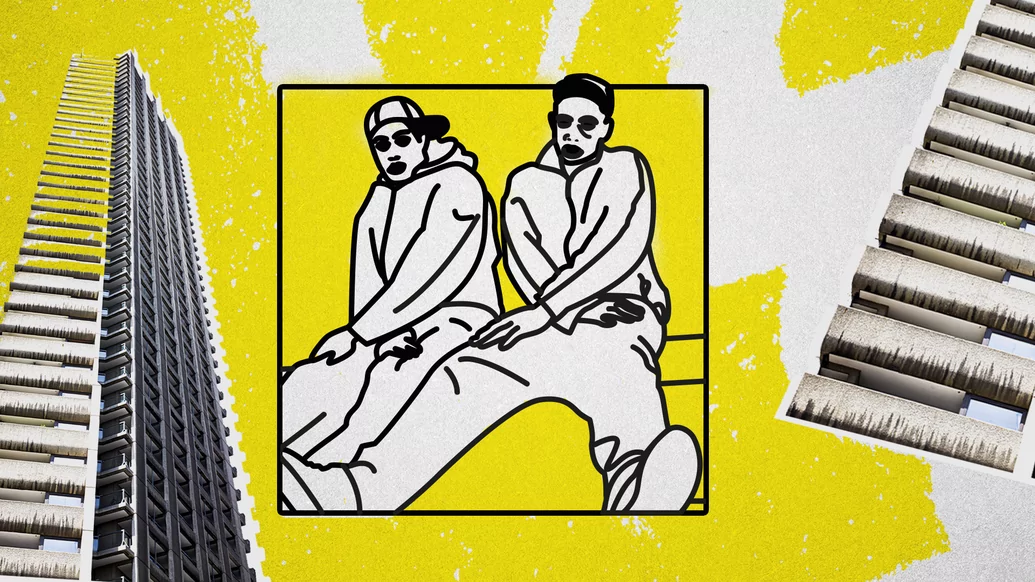

It’s true that the documentation of dance music culture in the UK has tended to be selective. Things are improving though. The past two years have seen the publication of works such as Dan Hancox’s Inner City Pressure: The Story of Grime, Joe Muggs’ oral history of UK soundsystem culture, Bass, Mids, Tops, and Caspar Melville’s forensic examination of London’s musical landscape in the ’80s and early ’90s, It’s A London Thing.
But there are still infinitely more books and documentaries focused purely on the acid house and rave era than anything else — or at least the best-known aspects of it. This matters because the acid house nostalgia industry is now big business, and the Ibiza origin story is at the heart of it. We live in a time where classical concerts featuring orchestral versions of vintage dance tunes are all the rage, and you can attend an “immersive theatrical experience” based on the mediocre ’90s rave film Human Traffic. There’s also a thriving market for books and articles on the “second summer of love”.
This nostalgia largely ignores the genuinely revolutionary events happening within British dance music: the birth of genres with black and working class roots, like bleep techno, happy hardcore, and jungle; or those popularised in LGBT clubs, like hard house. Bassline, a sound forged by black working class DJs and producers in the North and Midlands, received virtually no press coverage.
The treatment of jungle and drum & bass music and culture in their early years goes deeper — arguably, it was structural racism in action. As it emerged in the early ’90s, jungle was often demonised or ignored by venue owners, club promoters, and the music press. “This is a very complex story because the backlash against breakbeat became quite convoluted,” admits Martin James, author of 1997’s soon to be republished State of Bass: Jungle — The Story So Far.
“The mainstream dance music press rejected happy hardcore and breakbeat in favour of progressive house clubs, and these clubs had a bit of a dress code that excluded ravers and junglists. It wasn’t explicitly racist, but it was institutionally racist: we saw a media populated by educated white middle class kids promoting music being made by people like them, and played out in clubs where they felt safe.”
James noted that there are a number of stories relating to junglists being turned away from certain London clubs, “but not all junglists were black, so it is quite complex,” he says. “Often the only blackness in the room would be the DJ and the doormen. It is also important to note that this scene then pushed ‘pure DJ culture’ and dispensed with the MC — the clearest link to a black music diaspora.”
Ignorance has angered some would-be documentarians enough to spur them into action. One of them was Brian Belle-Fortune, author of 1999’s All Crews: Journeys Through Jungle/Drum & Bass Culture. Belle-Fortune was a jungle evangelist — an intensive care nurse who was so irritated about the lack of coverage given to the music he loved that he wrote to BBC Radio 1, pitching a show about it. To his astonishment, he was given a job producing the show he proposed, 1 In The Jungle, in 1995.
During the first few weeks the show was on air, Belle-Fortune convinced the producer of Woman’s Hour on Radio 4 to interview DJ Rap. “What followed was absolutely horrendous, though I should have seen it coming,” he sighs. “The producer kept asking me for clips of tracks with very specific gangster-type lyrics. When it came to the show, Jenni Murray’s first question to Rap was, ‘How can you be involved in this scene with all the sexist and violent lyrics?’ I couldn’t believe that someone could be so unprofessional and racist.”
Belle-Fortune continued to encounter these kinds of misconceptions and racist stereotypes when he moved into TV production. “When I was at MTV Europe I was hauled into the executive producer’s office because I’d chosen to do a video diary on a white, female DJ called Wildchild,” Belle-Fortune says.
“They thought that jungle was just a scene for young black men. It ended up in the biggest row I’ve ever had in a professional capacity. When I got home I started writing an email trying to explain what the jungle scene was. In the end, I never sent it — I started work on the book instead.”
Belle-Fortune devoted years of his spare time to interviewing junglists not because he was a journalist looking to add a book to his CV, but because he was a passionate raver who believed it was important to do so. “I did get the impression as I was interviewing people that there was a sense of relief that they could finally tell their stories,” he says. “There was a feeling that there were too many misconceptions about our culture that needed putting right.”
All Crews is still arguably the best book about the sound primarily because its partial oral history format allows those who shaped the movement to have their say — even when their stories contradict. If you take anything away from this article, it should be this: you don’t have to be a trained professional to document culture — just someone immersed in a scene with an eye for detail and a passion for making sure important stories are told.
Today’s music documentarians benefit from tools developed by knowledgeable enthusiasts that can help with research — Discogs being one, fine example — and it’s possible to track down almost anyone, however obscure, using search engines and social media. Even if you’re not an authority on something, by doing enough work you can become one.
“The link between authority and authorship is really important,” says Emma Warren, a veteran UK music journalist. Warren is passionate about demystifying the process of documentation. Her brilliant 2019 book, Make Some Space, tells the story of key London DIY venue Total Refreshment Centre, and includes a coda explaining how she researched, wrote, financed, and self-published it. She’s also run workshops on the process.
“I really appreciate people who pull back the curtain or make it possible to see how something is done,” she says. “I think by encouraging people and by giving them the facts on how you did it, it makes it possible for them to do it too.” For Warren, that means admitting past mistakes when “carving a narrative further into stone” (she cites her own contribution to reinforcing the Ibiza origin story), and doing as much work as is needed to find and interview those figures whose contributions have been overlooked.
“I recognise that those of us who author a story should have some authority. We gain that either through lived experience or by our commitment. I’ve written a lot about culture that I didn’t experience first hand,” Warren continues. “But I hope that I have earned the right to author it by my commitment to being there on the dancefloor, and my commitment to understanding racial politics and the structures that underpins a lot of it. Whether or not I have earned the right to authorship, I’m on a constant quest to make sure that I have.”
If the story’s wrong or has yet to be documented, do it yourself. For the benefit of future generations and those that came before us, we need more dance music documentarians. After all, history doesn’t write itself.


